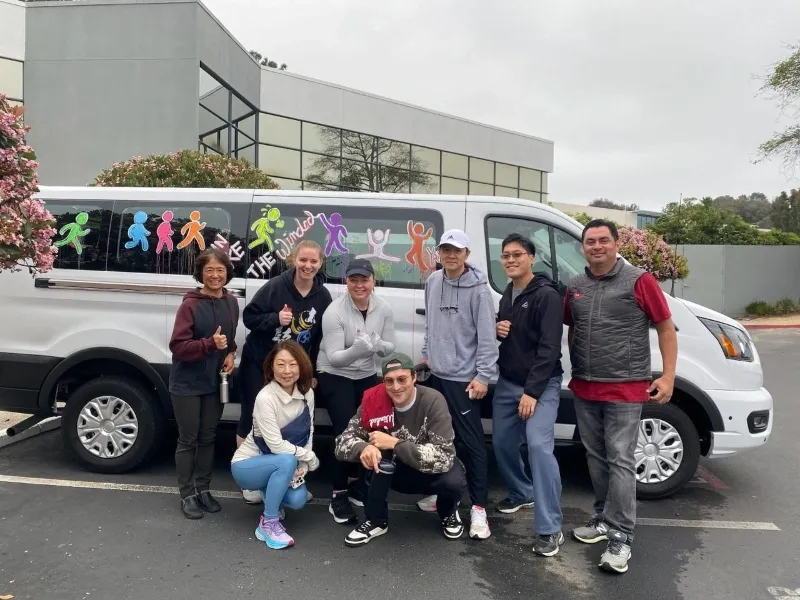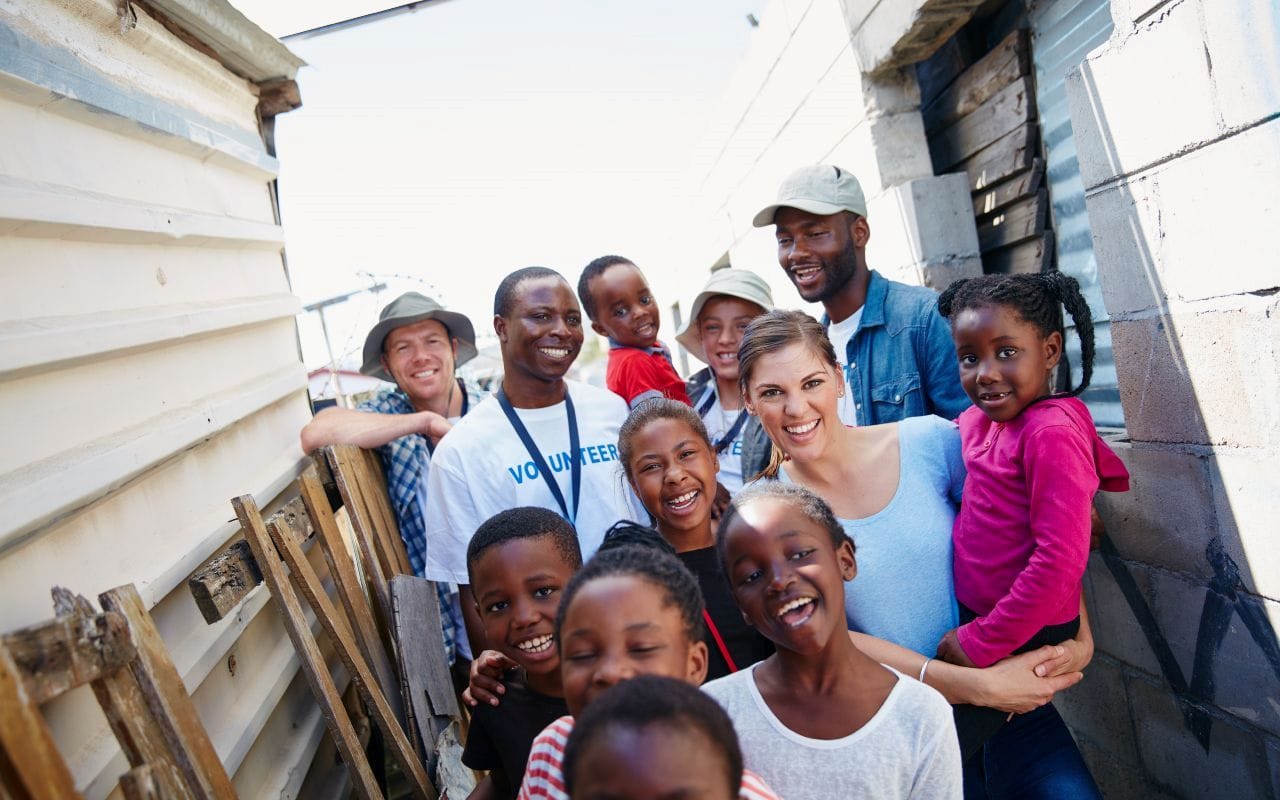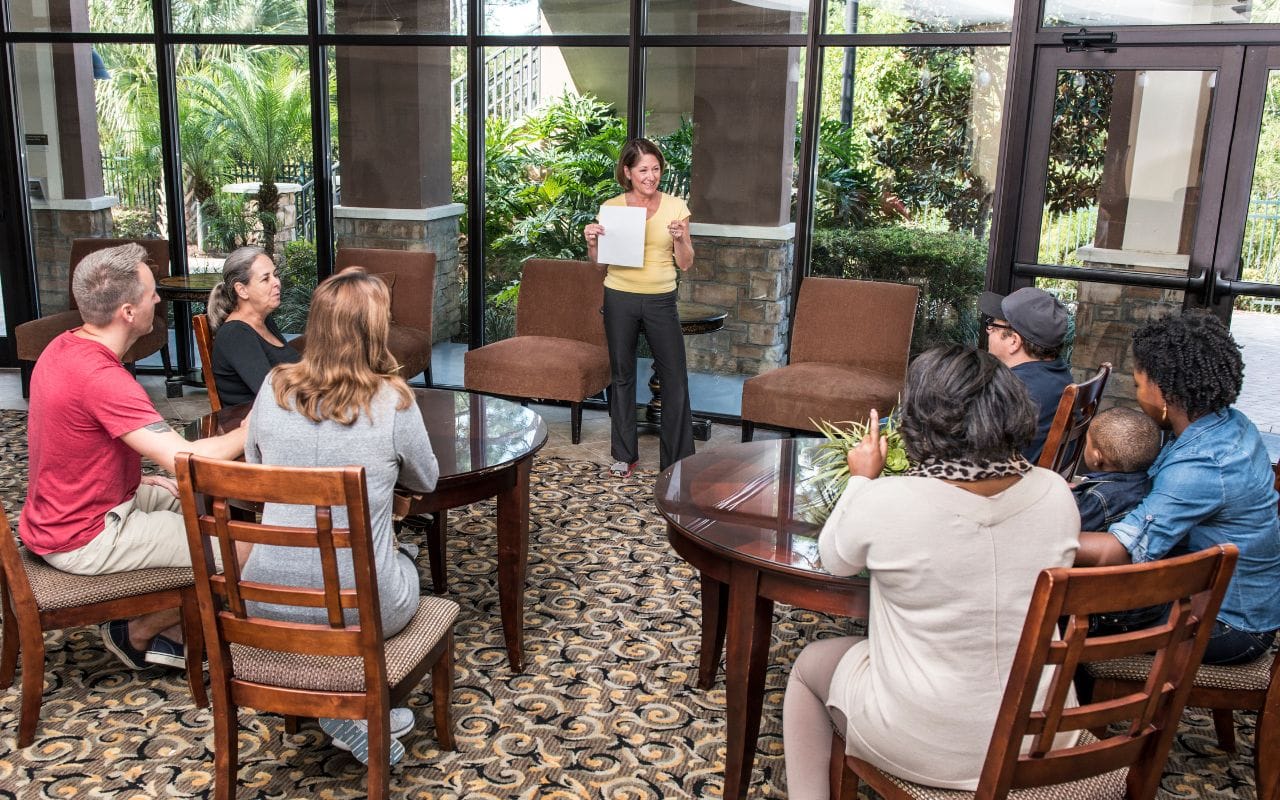Community-Centric Fundraising: Engaging Ideas
Community-centric fundraising (CCF) is a new way of fundraising for nonprofits. It's different from traditional methods because it focuses on the community instead of individual donors. The goal is to build strong relationships between nonprofits and their communities, making sure everyone has a voice and is included in decision-making processes.
The nonprofit sector can potentially benefit from more holistic approaches to fundraising strategies. Create your donor profile on Bold.org today and consider supporting diverse communities with scholarship funds!
Why Community-Centric Fundraising Matters
There are several reasons why CCF is important:
- Empowerment: CCF gives power back to the community by involving them directly in fundraising decisions.
- Equity: It promotes fairness and social justice within fundraising practices, ensuring that everyone has an equal opportunity to support causes they care about.
- Trust and Engagement: By prioritizing the needs and preferences of the community, nonprofits can build trust and create meaningful connections with their supporters.
Understanding Community-Centric Fundraising
In the nonprofit sector, fundraising approaches significantly impact the sustainability and effectiveness of organizations. Traditionally, donor-centric fundraising has been the dominant model. This approach prioritizes the needs and interests of donors, focusing on cultivating relationships with them to secure ongoing financial support.
Traditional Donor-Centric Fundraising
Donor-centric fundraising strategies typically involve:
- Personalized Communication: Regular updates and personalized messages to donors.
- Recognition Programs: Naming opportunities, special events, and public acknowledgments to honor major contributions.
- Donor Benefits: Exclusive access to events, reports, or other perks as a token of appreciation.
This model has proven successful in many respects, often resulting in significant financial contributions and long-term donor loyalty. However, it can sometimes lead to an imbalance where the focus shifts primarily to high-net-worth individuals and their preferences.
Community-centric fundraising (CCF) introduces a paradigm shift. Instead of centering on individual donors, CCF emphasizes the collective power of communities. This approach seeks to:
- Address broader social justice issues.
- Foster inclusive practices that benefit marginalized groups.
- Create sustainable change through community involvement.

The Transformative Potential of Community-Centric Fundraising
Community-centric fundraising can drive positive change by fostering stronger relationships between nonprofits and their communities.
Key Benefits of CCF
- Increased Donor Retention: By engaging donors in meaningful ways that align with their values, nonprofits can foster greater loyalty.
- Long-Term Sustainability: Empowering communities to take an active role in fundraising efforts ensures ongoing support and shared ownership of outcomes.
- Social Justice: CCF prioritizes equity by addressing systemic barriers that marginalized communities face.
Case Studies Illustrating CCF Success
- Local Food Banks: Implementing community-driven initiatives where local residents participate actively in both fundraising and distribution efforts.
- Educational Programs: Scholarships funded by community members for underrepresented students, ensuring accessibility and representation in higher education.
These examples highlight how shifting from a donor-centric model to a community-centric approach can lead to more resilient and equitable nonprofit organizations.
CCF challenges traditional paradigms but offers a transformative path forward for the nonprofit sector. As we delve deeper into this topic, exploring both its challenges and strategies for effective implementation will provide a comprehensive understanding for those looking to adopt community-centric practices.
The Transformative Potential of Community-Centric Fundraising
Community-centric fundraising (CCF) changes how nonprofit organizations interact with their supporters by prioritizing the community's needs and values over individual donor preferences. This approach focuses on fairness, social justice, and the empowerment of marginalized leaders.
Driving Positive Change
CCF creates stronger relationships between nonprofits and their communities. By caring about everyone's well-being instead of just one person's gain, organizations can make a more welcoming space that encourages everyone in the community to get involved. This change helps build trust and mutual respect, leading to support systems that last longer.
Case Studies: The Benefits of CCF
Here are some real-world examples showing how adopting a community-centric approach can make a difference:
- Increased Donor Retention: Nonprofits that make clear communication a priority and include donors in decision-making processes often keep more donors around. For example, an organization working in underserved urban areas saw a 25% increase in repeat donations after starting to use CCF principles.
- Long-Term Sustainability: Using CCF can lead to long-term sustainability by connecting fundraising efforts with bigger goals for fairness in society. A nonprofit focused on education in rural areas got a lot more volunteers and money after starting to address the unfair systems hurting its community.
By using these principles in their fundraising plans, nonprofits not only move closer to their goals but also help make society more fair for everyone. The focus on fairness for different races and incomes means that philanthropy's good effects get shared equally across the whole community.

Challenges in Practicing Community-Centric Fundraising
Community-centric fundraising (CCF) presents unique challenges that nonprofits need to navigate. A significant concern is the potential for increased workload on nonprofit staff. Shifting from a donor-centric to a community-centric model often requires additional resources and time investment. This shift involves more extensive community engagement, personalized communication strategies, and ongoing relationship-building efforts.
Racial and Economic Justice
Adopting a community-centric approach also necessitates intersectional strategies to ensure racial and economic justice within fundraising practices. Traditional fundraising methods have sometimes marginalized minority communities by not addressing systemic inequities. CCF aims to rectify this but requires intentional and inclusive approaches to truly make an impact.
Intersectional Approaches
Inclusive strategies must consider various forms of inequality, ensuring that fundraising efforts do not inadvertently favor one group over another. Nonprofits must be diligent in recognizing and addressing these disparities to promote genuine equity within their communities.
Criticisms:
- Resource Intensity: The additional effort required can strain already limited resources.
- Complexity: Implementing intersectional approaches can be complex and nuanced.
- Sustainability: Ensuring long-term sustainability while addressing immediate community needs can be challenging.
Balancing these concerns with the transformative potential of CCF is crucial for nonprofits aiming to foster stronger, more equitable relationships with their communities.
Strategies for Engaging Donors in Community-Centric Fundraising
Transparent and inclusive communication strategies are vital in community-centric fundraising (CCF). Sharing impact stories that highlight the role of donors in creating change fosters a sense of belonging and purpose.
When donors see the tangible results of their contributions, they become more invested in the cause. For instance, regular updates on project milestones or personal testimonies from beneficiaries can illustrate how donations are making a difference.
Building strong donor relationships is another cornerstone of effective CCF. Personalized acknowledgments and regular communication help to nurture these connections. A simple yet heartfelt thank-you note can go a long way.
Regular updates through newsletters or personalized emails keep donors informed and engaged. Highlighting how their specific contributions have impacted the community reinforces their importance in the mission.
Key Strategies for Effective Donor Engagement:
- Transparent Communication: Share detailed impact stories to show how donations are utilized.
- Personalized Acknowledgments: Send tailored thank-you notes to express genuine appreciation.
- Regular Updates: Keep donors informed with consistent communication about ongoing projects.
Involving board members in these practices can amplify efforts. Board members can play a crucial role by personally reaching out to major donors, adding an extra layer of connection and trust. This ensures that the fundraising efforts remain community-centric, with all stakeholders feeling valued and integral to the nonprofit's success.
Effective stewardship practices not only build trust but also enhance donor retention, ensuring long-term sustainability for community-centric fundraisers.

Embracing Innovation: Creative Ideas for Community-Centric Fundraising Events
Think Outside the Box
Community-centric fundraising thrives on authenticity and community involvement. Traditional fundraising events often prioritize revenue generation, but shifting focus can create more meaningful connections with your community. Consider these innovative ideas:
- Storytelling Nights: Invite community members to share their personal stories related to your cause. This fosters a sense of belonging and makes the impact more tangible.
- Skill-Sharing Workshops: Host workshops where local experts teach valuable skills. This not only educates participants but also strengthens community bonds.
- Pop-Up Events: Set up temporary events like mini-markets or art galleries that showcase local talent, connecting people while supporting the cause.
Leveraging Technology for Virtual Community Engagement and Fundraising
The digital age offers numerous opportunities for virtual fundraising and community engagement. Embrace technology to expand your reach beyond geographical limitations.
Virtual Fundraising Ideas
- Online Auctions: Utilize platforms like eBay for Charity to host virtual auctions. Encourage local businesses to donate items, creating a win-win situation for both your cause and the businesses.
- Virtual Walkathons/Runs: Organize virtual fitness events where participants track their progress using fitness apps and share updates on social media.
- Live Streaming Events: Host live events such as concerts, panel discussions, or cooking classes. Platforms like Facebook Live, YouTube, and Twitch are excellent for reaching a broad audience.
Social Media Campaigns
Social media can amplify your fundraising efforts significantly.
- Hashtag Campaigns: Create a unique hashtag for your campaign and encourage supporters to share their stories or reasons for donating using this tag.
- Influencer Partnerships: Collaborate with local influencers or community leaders who resonate with your cause. Their endorsement can bring credibility and attract new donors.
- Engaging Content: Regularly post engaging content such as impact stories, behind-the-scenes looks at your work, and updates on fundraising goals to keep your audience engaged.
Crowdfunding Platforms
Crowdfunding platforms offer accessible ways for people to support causes they care about.
- GoFundMe/JustGiving: These platforms allow you to create dedicated pages for specific projects or needs. Share these pages widely and update donors on the progress.
- Peer-to-Peer Fundraising: Encourage supporters to create their own fundraising campaigns on behalf of your organization. This decentralizes efforts and taps into new networks.

Opportunities and Challenges in Digital Fundraising
Digital fundraising brings both opportunities and challenges:
Opportunities
- Wider Reach: Engage with supporters globally without geographical constraints.
- Cost-Effective: Reduce overhead costs associated with physical events.
- Data Insights: Use analytics tools to track engagement and tailor strategies effectively.
Challenges
- Technology Access: Ensure all community members have access to the necessary technology to participate.
- Digital Fatigue: Combat screen fatigue by keeping online events interactive and brief.
- Privacy Concerns: Safeguard donor information with robust cybersecurity measures.
Embracing innovation in community-centric fundraising not only diversifies your approach but also strengthens the bond between nonprofit organizations and their communities. By focusing on authenticity, leveraging technology, and addressing challenges head-on, we can create impactful experiences that resonate deeply with our supporters.
Community-Centric Fundraising with Bold.org
Bold.org provides powerful tools for donors to engage in community-centric fundraising. Leveraging the platform, donors can create scholarships, fellowships, and grants within minutes. This flexibility allows community members and nonprofit organizations to tailor funds that target specific needs and potential.
Raising Money with Bold.org
Donors can easily raise money using the fundraising tools available on Bold.org's website. The process is streamlined:
- Create a Free Profile: Donors can set up profiles at no cost.
- Customizable Funds: Whether it's scholarships, fellowships, or grants, donors have the freedom to define the purpose and criteria for their funds.
- Tax-Deductible Donations: All contributions made through Bold.org are 100% tax-deductible, encouraging higher participation from potential donors.
Scholarships Promoting Education and Economic Justice
Scholarships play a critical role in aiding marginalized communities and promoting education. They provide opportunities that might otherwise be inaccessible due to financial constraints. By funding education:
- Breaking Barriers: Scholarships help break down barriers for students from underrepresented backgrounds.
- Long-Term Impact: Education opens doors to better job prospects and economic mobility.
Award money like scholarships fosters economic justice by:
- Empowering Individuals: Providing financial support for education empowers individuals to pursue their academic goals without the burden of debt.
- Promoting Equity: Targeted scholarships ensure that resources reach those who need them most, addressing disparities in access to education.
Bold.org's approach aligns perfectly with community-centric fundraising principles by focusing on inclusivity and direct impact on communities. This method not only supports individual growth but also contributes to broader societal change through education and economic empowerment.
Embracing the principles of community-centric fundraising can revolutionize your approach to fundraising campaigns. By focusing on community-centered fundraising, you build stronger, more meaningful relationships within your community, ensuring that every stakeholder feels valued and heard.
Why This Matters
- Economic Justice: Practicing community-centric fundraising drives economic justice, ensuring that resources are equitably distributed and marginalized communities receive the support they need.
- Greater Impact: Aligning your strategies with these principles can lead to more sustainable donor relationships and a higher retention rate, which ultimately results in a greater impact on your nonprofit's mission.
Bold.org provides innovative tools to help you implement these principles effectively. Donors can create scholarships and funds that directly benefit students and promote education, contributing to a more just and equitable society.
Take this opportunity to rethink your strategies. Engage deeply with your community, listen to their needs, and let those insights guide your fundraising efforts. The shift towards community-centric methods not only transforms how you raise funds but also strengthens the very fabric of the communities you aim to uplift.
Frequently Asked Questions About Community-Centric Fundraising
What is community-centric fundraising?
Community-centric fundraising (CCF) is a holistic approach that emphasizes collective action and mutual support within a community. This model seeks to build strong connections among all stakeholders, including donors, beneficiaries, and nonprofit staff, ensuring that the entire community benefits equitably from philanthropic efforts.
What are the differences between community-centered fundraising and traditional donor-centric fundraising?
Community-centered fundraising focuses on collective community efforts and mutual support, while donor-centric fundraising emphasizes individual donors and their contributions.
Community-centric approaches prioritize building relationships within the community, ensuring everyone benefits and thrive together, whereas donor-centric methods often center around meeting the specific desires and recognition of individual donors.
What are some effective strategies for implementing community-centric fundraising in nonprofit organizations?
- Transparent Communication: Share impact stories that highlight community involvement.
- Inclusive Engagement: Involve community members in decision-making processes.
- Personalized Stewardship: Acknowledge contributions with personalized messages and updates.
- Innovative Events: Plan authentic events that involve the community rather than focus solely on revenue.
- Leverage Technology: Utilize social media and crowdfunding platforms for broader reach.
How can community-centric fundraising impact equity and social justice in local communities?
By focusing on inclusivity and mutual benefit, CCF promotes racial and economic justice. It allows marginalized communities to have a voice in fundraising efforts, leading to a more equitable distribution of resources. This approach helps dismantle systemic barriers, empowering communities to drive positive change from within.
Community-centric fundraising is a way to bring social justice into the nonprofit world. Create your donor profile today on Bold.org and plan a community-centric fundraiser!

About Bold.org Donor Team
At Bold.org, our Donor Team is driven by a shared commitment to helping individuals and organizations make a lasting difference through scholarships and charitable giving. We are passionate about supporting donors throughout their philanthropic journey, ensuring that their contributions create lasting, positive change.
Our commitment goes beyond guiding donors through the scholarship process—we also craft educational content that shares our expertise and inspires impactful giving. By creating donor-focused resources, we not only support donors directly but also provide valuable insights to help them navigate their mission of giving with confidence.
With extensive experience in fundraising, scholarship creation, and donor relations, we specialize in bringing your vision to life. Whether it’s crafting a scholarship that reflects your values or ensuring your generosity opens doors for students, our team is here to help you achieve your philanthropic goals.
We believe philanthropy should be accessible, transformative, and deeply rewarding. Every piece of content we write, every scholarship we help build, and every relationship we nurture is driven by our shared goal: to empower donors and change lives through education. Together, we’re shaping a brighter future, one contribution at a time.